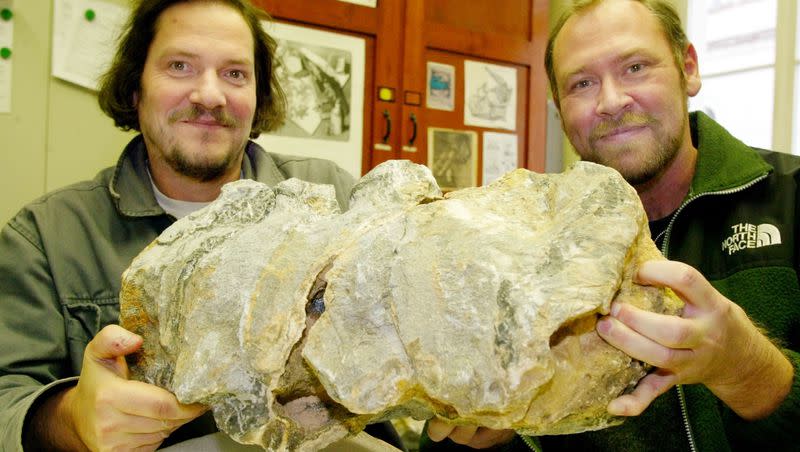The skull of a giant prehistoric sea monster was found in the U.K.

- Oops!Something went wrong.Please try again later.
A sea monster was discovered on a beach in southern England — or its remains were.
Fossil hunter Philip Jacobs found the snout of an ancient ocean predator called the pliosaur on a beach in Dorset County in southern England. It’s one of the most well-preserved skulls of the gigantic specimen found so far and is about 150 million years old, according to CNN.
‘Attenborough and the Jurassic Sea Monster’
It was first discovered in the spring of 2022, but the BBC will release a documentary about the excavation and ongoing investigation titled, “Attenborough and the Jurassic Sea Monster” featuring Sir David Attenborough. It will air on Feb. 14, per CNN.
What do we know about pliosaurs?
The skull is about six feet long and has a full set of teeth and had no bones missing, marking it a “discovery of a lifetime,” one expert told The New York Times.
“There are some special features in it that we haven’t seen on the previous ones that have been discovered,” Steve Etches, a paleontologist who has been collecting fossils for more than 40 years and was involved in the excavation, told the Times.
Pliosaurs used to roam the ocean during the Jurassic and Cretaceous periods, their bite could kill in a single bite and it had the ability “to propel itself at high speed,” BBC reported.
One scientist described it as “an underwater T. rex.”
“The animal would have been so massive that I think it would have been able to prey effectively on anything that was unfortunate enough to be in its space,” Dr. Andre Rowe from Bristol University told BBC.
Another pliosaur discovery
In 2002, German paleontologists Eberhard Frey and Wolfgang Stinnesbeck, along with a team, found the 120-million-year-old skull of a pliosaur in Mexico. It is currently on display in the Natural History Museum in Karlsruhe, Germany, National Geographic reported.

